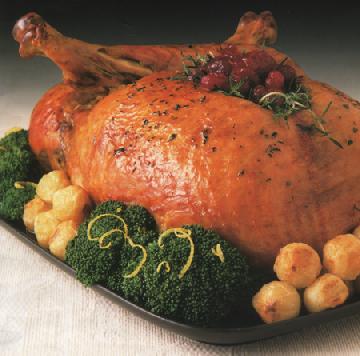
Christmas is nearing and there must be ‘n’ number of ‘game’ plans. However, the game I am talking about is turkey. Turkey and wine makes your Christmas night, isn’t it? But how many times have you felt a kind of nausea after eating turkey? No, I am not blaming the wine here.
If the game is not handled properly in the thawing and cooking stages, it might lead to food poisoning. Turkey and other games are generally associated to food borne bacteria.
In the first place, you should avoid cross contamination of foods, by not letting the raw foods, meet frozen turkey. In the second place, you should purchase fresh turkey and fresh means you should look up for the date in the register of the retail store. As far as cooking it is concerned, you should avoid cooking the turkey with stuffing, thereby reducing the possibilities of bacteria multiplication.
Frozen turkey is usually thawed or submerged in ice-cold salty water to reduce the ‘gamey’ flavor. It is mandatory to take out the neck and giblets of turkey and washing out its juices before thawing. Then after drying the turkey completely it should be wrapped before thawing, making sure the water is not able to leak through the wrapping.
In the stuffing stage it is important to prepare the wet and dry ingredients separately and mixing them just before stuffing. The stuffing should be chilled and should be stuffed into the turkey just before roasting. It is very important to stuff the turkey loosely allowing stuffing to reach the proper 165 °F internal temperature. The stuffing should not be raw.
The final roasting should not be done below 350 °F, until the stuffing reaches 165 °F. Thanks Food and Cooking




